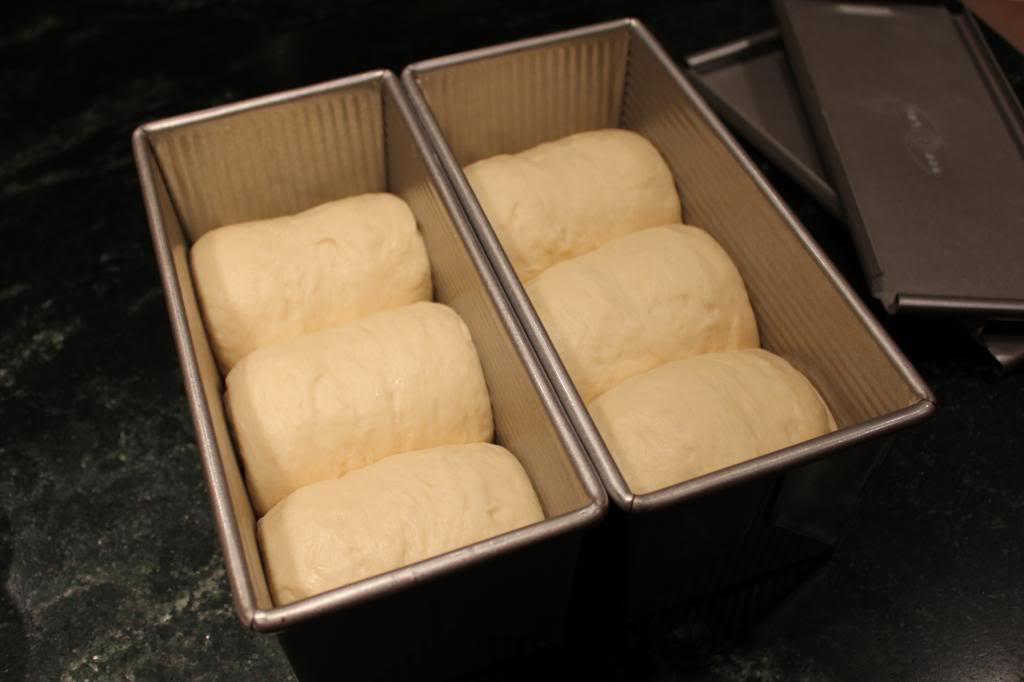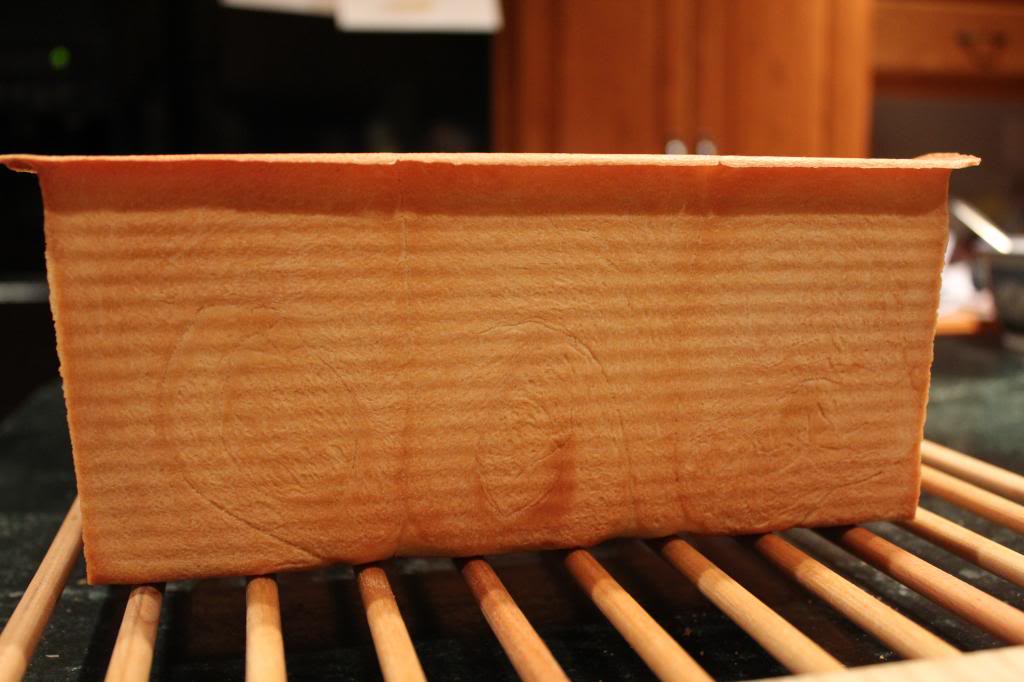
New and (could be) improved!
More than a little irony in that title...
Let's talk about the new, first. That would include the second edition of Hamelman's Bread and the pain de mie formula found in it. It would also include some new Pullman pans that I picked up recently. The book is remarkable, as many before me have said. I don't see this one getting shoved aside by future books, as has happened with some that I own. Yes, there are a few nits (why weren't the home formulae in metric units instead of English units?) but they are rather trivial compared to the quantity and quality of information residing between the covers. The Pullman pans figure as a long-delayed gratification. When faced with that much "new", why not put all of them together? And then, to really put it over the top, why not employ a previously unused shaping technique?
That takes us to the "could be improved" part of the tale. Not the formula, mind you, nor the pans, either. The dough was a real treat to work with, especially since I usually work with breads having a significant percentage of whole grains. It was smooth, silky, satiny; embodying all of those lush descriptors that cookbook authors love to employ. The new (to me) shaping technique even worked nicely, thanks to txfarmer and others who like assemble their loaves from smaller components. And the finished bread tastes wonderful, too.
Everything appeared to be going well in the early stages:

There's just one niggling little problem. Someone (I need to get an assistant, if only to serve as whipping boy) miscued on the dough quantity calculations. It wasn't a fat-finger mistake, either. More like a fat head mistake. I shouldn't be so negative. This bread actually achieved something that many home bakers want to emulate in their breads: ears. No, no, no, not that kind of ears, this kind:

Maybe I should call them eaves, instead of ears.
Anyway, the loaves have a beautiful fluffy core, perhaps 2.5 inches across, with an approximately .75 inch wide perimeter band that is dense and firm. Quite firm. Oh, okay, it requires some serious chewing! Not your Momma's Wonder Bread by any stretch of the imagination. The crust is lovely, though.
Just guessing, but I probably had about 15% too much dough for the pans. Thank goodness for a non-stick lining and some generous greasing before putting the dough in the pans. The lids were somewhat reluctant to release but came off without requiring excessive force or causing harm to anything.
I think I want to try this bread again, albeit with the right amount of dough in the pans. If that works as I expect it can, the next step will be to experiment with some of Hamelman's ryes, baked in the Pullman pans. If I get really brave, I may even try the Horst Bandel pumpernickel.
Despite my frustration with myself, it was a fun experience to play with a new bread, new pans, and a new technique. And I've only scratched the surface with this book!
Paul


Comments
Paul,
The top of your loaf could be compared to a flat top. You remember those? A common hair style in the 50's....
I still don't always gauge the amount of dough correctly when I use my pullmans but I don't use a lid so the dough can rise as high as it likes but the end pieces get smooshed when I do use too much dough. I have found different doughs behave differently too....While I haven't mastered my pullman pans I am having fun trying. Sounds like you are having fun too.
Thanks for the post and photos.
Take Care,
Janet
back when I was in elementary school, Janet. Although, since my mom cut our hair then, it could have been that flat tops were the simplest thing to do.
There's another connotation for flat top that Navy people would point out: an aircraft carrier. This loaf's appearance could work in that context, too.
Yes, it's fun. Just another learning curve to climb. ;-)
Paul
Hi Paul, Your bread looks lovely and unique. It would be really hard to get that effect on purpose I'm guessing. I have found through trial and error (mostly error) that 1350g seems to be the max dough that can fit into a pullman with lid (the 9 inch variety anyhow.) Do you know what your dough weight was? -Varda
about achieving that again. I wrote everything down, so maybe I could. Or not. Not sure that I want to right away, though.
Without the numbers in front of me, I may not recall correctly. It seems like I had about 1.8kg to divide between the two pans but I would have to review to be sure.
My pans are the 9x4x4 models from American Pan.
Paul
who needs a crumb shot? Nice bakling Paul and have fun with Bread 2 and your new pans in 2013!
All they lack is a baker who can make the best use of them. Oh well, they're stuck with me.
Paul
Paul,
I bake Hamelan recipe, white wheat, Pullman loaves for my family.
I have a 13 x 4 x 4 inch tin with lid, and the vendor recommended 1.130 Kg as the ideal weight of dough - It works for me.
I believe that a weight in the region of 782g for each of your 9 inch tin would work for you - I think you have already recognised this when you said you suspected your dough weight was about 15% too much.
Happy baking and best regards,
Brian